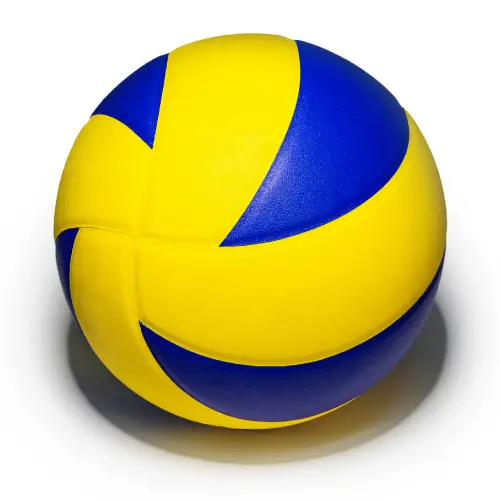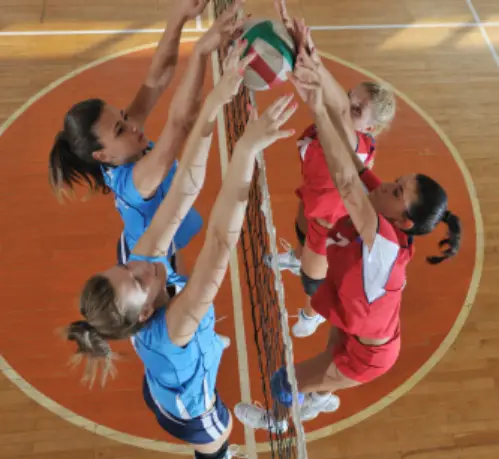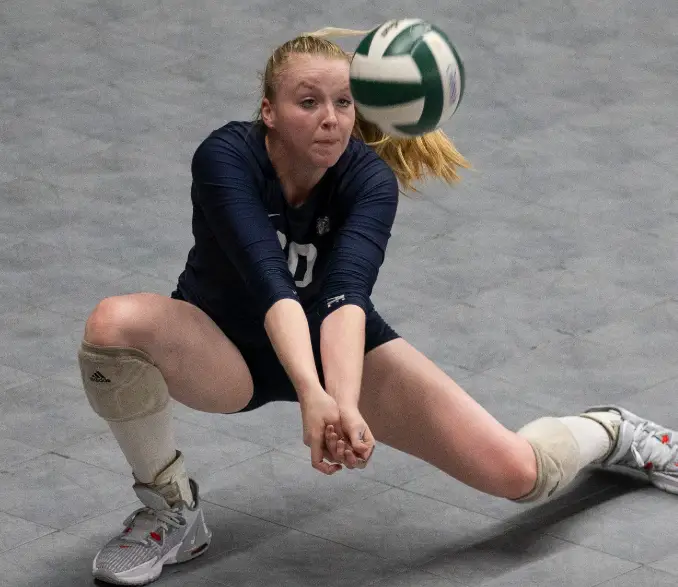Setting is a crucial skill in volleyball that requires precision, technique, and quick decision-making. Whether you’re a beginner or an experienced player, improving your setting technique can significantly impact your game. In this article, we will explore six effective techniques to enhance your setting skills in volleyball. From proper hand positioning to footwork and communication, we’ll cover all the essential aspects to help you become a more confident and efficient setter. So, let’s dive in and take your setting abilities to new heights!
What is the correct hand positioning for setting?
Hand positioning plays a vital role in executing accurate and controlled sets. To improve your setting technique, it’s crucial to understand the correct hand placement. The ideal position involves creating a triangle shape with your thumbs and index fingers, ensuring your fingers are spread comfortably apart. This hand shape provides stability and control over the ball.
Additionally, your wrists should be firm and aligned with your forearms. Avoid bending your wrists backward or forward, as it can lead to inconsistencies in your sets. A solid hand position will help you generate optimal power and direction while maintaining accuracy.
How can footwork enhance your setting technique?
Footwork is an essential component of setting technique as it provides stability, balance, and the ability to move quickly. Effective footwork allows you to position yourself accurately and efficiently for each set. Here are a few key footwork tips to improve your setting technique:
- Balanced Stance: Start with a balanced stance, slightly wider than shoulder-width apart. Distribute your weight evenly on both feet to maintain stability.
- Quick Step: Anticipate the trajectory of the ball and take a small step with your non-dominant foot in the direction you intend to set. This initial step helps you establish a solid base and prepares you for the upcoming movement.
- Transfer of Weight: As the ball reaches your hands, transfer your weight to your dominant foot, pushing off with your non-dominant foot. This transfer of weight adds power and precision to your set.
- Square Shoulders: Ensure your shoulders are square to the target, allowing for accurate and consistent sets. Avoid twisting or opening your shoulders prematurely, as it can affect the direction and control of the set.
By mastering these footwork techniques, you’ll be able to position yourself optimally and deliver more accurate sets to your teammates.
How can communication enhance your setting technique?
Communication is a fundamental aspect of setting in volleyball. Effective communication with your teammates can greatly improve your setting technique and overall team coordination. Here’s how you can enhance communication during setting:
- Calls and Signals: Establish a set of verbal calls or hand signals with your teammates to communicate your intended set type and location. This ensures everyone is on the same page and ready to respond accordingly.
- Eye Contact: Maintain eye contact with your hitters to gauge their positioning and readiness. This visual connection helps you deliver the right set at the right time, maximizing your team’s attacking opportunities.
- Feedback Loop: Encourage open communication among your teammates. Seek feedback from hitters regarding the quality and suitability of your sets. This feedback loop allows you to adapt and improve your setting technique based on their preferences.
By fostering clear communication, you’ll build trust and synchronization within your team, resulting in more successful sets and improved overall performance.
What are the common mistakes to avoid in setting technique?
To improve your setting technique, it’s essential to identify and rectify common mistakes
. Here are some common errors to avoid:
- Poor Hand Contact: Avoid slapping or pushing the ball during the set. Instead, focus on a clean and controlled contact using your fingertips. This ensures better accuracy and consistency.
- Inconsistent Release: Maintain a consistent release point during your sets. Releasing the ball at different heights or angles can disrupt the timing and rhythm of your hitters.
- Lack of Upper Body Strength: Building upper body strength is crucial for effective setting. Weakness in the arms and shoulders can lead to inaccurate sets and fatigue. Incorporate strength training exercises into your fitness routine to enhance your setting capabilities.
- Overcomplicating Sets: While it’s important to vary your sets, avoid unnecessarily complex or fancy techniques that may sacrifice accuracy. Stick to the basics and focus on consistent and well-executed sets.
By avoiding these common pitfalls, you’ll be able to refine your technique and deliver more precise and effective sets.
How can visualization contribute to improving setting technique?
Visualization is a powerful mental tool that can significantly enhance your setting technique. By visualizing successful sets in your mind, you reinforce the neural pathways associated with the desired actions. Here’s how to leverage visualization:
- Relaxation and Focus: Find a quiet space and relax your mind and body. Take deep breaths to calm your nerves and increase focus.
- Mental Rehearsal: Visualize yourself executing flawless sets, imagining the perfect hand positioning, footwork, and communication. Picture the ball leaving your hands with precision and landing in the ideal spot.
- Sensory Engagement: Engage all your senses during visualization. Feel the texture of the ball, hear the sound of the ball being contacted, and visualize the trajectory and flight of the ball.
By regularly practicing visualization, you’ll develop a stronger mental connection between your intentions and actions, leading to improved setting technique on the court.
How can consistent practice and feedback contribute to setting improvement?
Consistent practice and feedback are the cornerstones of setting improvement. Here’s how these factors can positively impact your setting technique:
- Repetition and Muscle Memory: Regular practice helps develop muscle memory, making setting technique more instinctive and consistent over time. Repetition allows your body to adapt and refine the necessary motor skills.
- Targeted Drills: Incorporate setting-specific drills into your training routine. Focus on specific aspects, such as hand positioning, footwork, or quick decision-making, to isolate and improve individual skills.
- Coach’s Guidance: Seek feedback and guidance from a knowledgeable coach or experienced player. Their insights can help you identify areas for improvement and provide valuable tips and corrections.
- Video Analysis: Record your setting sessions and review them later to identify any weaknesses or areas that require refinement. This visual feedback provides an objective perspective and facilitates self-correction.
By consistently practicing and seeking feedback, you’ll continually refine your setting technique, ultimately becoming a more proficient and reliable setter.
Conclusion
Improving your setting technique in volleyball requires dedication, practice, and a focus on key aspects such as hand positioning, footwork, communication, visualization, and feedback. By implementing the techniques discussed in this article and committing to regular training, you’ll enhance your setting abilities, become a more effective setter, and elevate your team’s performance on the court. So, go ahead, apply these techniques, and enjoy the journey of mastering the art of setting in volleyball!







